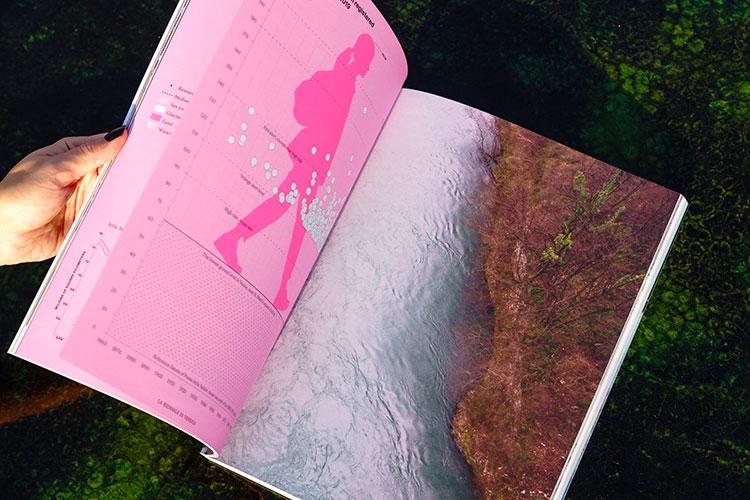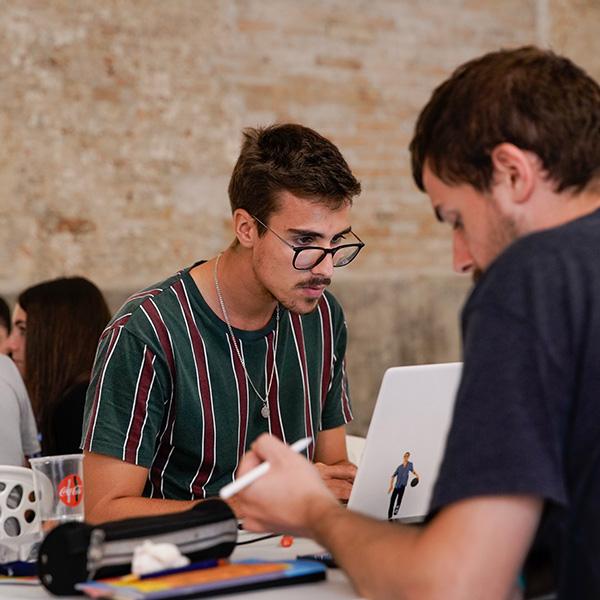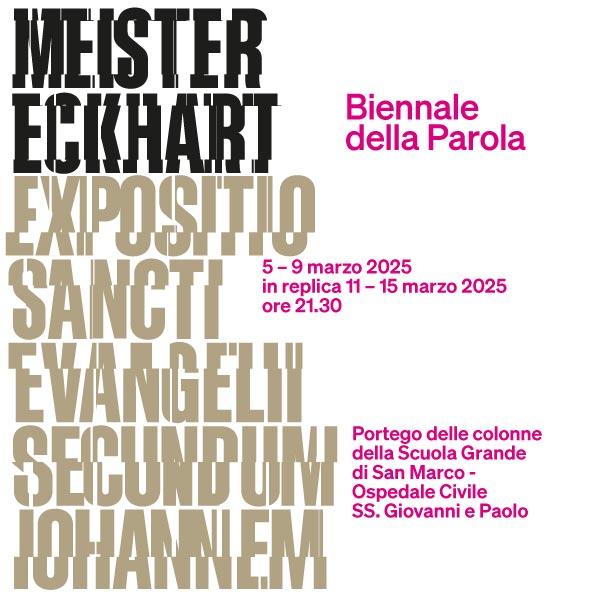Diluvi prossimi venturi / The Coming Floods
no. 1 / 2024

After 53 years the historic magazine published by La Biennale di Venezia comes back to life
Each quarterly issue will have a focus, establishing a dialogue between visual arts, architecture, dance, music, theatre, cinema – as well as science and literature.
Presentation of the issue number 1/24
The historic magazine published by La Biennale di Venezia is coming back to life 53 years after its last publication. Issue number 1/24, titled Diluvi prossimi venturi / The Coming Floods, and the project for the new quarterly magazine – which is embedded in the activity of the Historical Archive of La Biennale – have so far been presented in Venice (24 October), Padua (5 November), Paris (Offprint Paris, 7 > 10 November), Shanghai (8 November), Rome (Più libri più liberi, 4 > 8 December), Terni (7 December), San Donà di Piave (13 December), Syracuse (29 December) and Naples (30 January).
“The Magazine – explains Debora Rossi – is being revived with the same spirit and nature that distinguished it since its first edition, steered by a key word, ‘research’, a term that appears in the very law that instituted La Biennale. It represents a space for reflection and discussion about the present time, with the aim of better understanding and imagining the future”.
The project
Conceived and produced as a printed edition, and featuring a significant iconographic apparatus that draws largely from the Historical Archive of La Biennale and from national and international photographic research, the magazine will be published quarterly. Each issue will have a monographic focus, establishing a dialogue between the disciplines characteristic of La Biennale di Venezia – visual arts, architecture, dance, music, theatre, cinema – as well as science and literature. Like the original magazine, fashion is also included among its areas of interest, by reason of the relation of its creative processes with art, archives, and experimentation.
The content
Each issue will contain original and exclusive articles, testimonies, interviews, dialogues and contribution by artists, scholars, leading Italian and international figures in the world of culture and civil society. There will be a range of expressive modes, giving space to graphic design and the cross-fertilisation between languages.
The contributions in issue n. 1/24 are by Manal AlDowayan, Engin Akyurek, Carlo Barbante, Davide Brullo, Carolyn Carlson, Aziza Chaouni, Giovanni Lindo Ferretti, Giulia Foscari, Chiara Ianeselli, John Kinsella, Piersandro Pallavicini, Francesco Palmieri, Gilda Palusci, Orhan Pamuk, Mariagrazia Pontorno, Elena Pettinelli, Andrea Rinaldo, Emanuele Rosa, Stenio Solinas, José Tolentino de Mendonça, Lorenzo Toso, Luciano Violante, Peter Weir, Kongjian Yu. The cover is illustrated with a photograph of Yuri Ancarani taken during the shooting of his film Atlantide. The volume is illustrated with photographic images from the Biennale Archive and with photographs by Chiara Arturo, Alessandro Cinque, Antonio Martinelli, Paolo Pellegrin, Italo Rondinella, Paolo Verzone, Federico Vespignani, Francesco Zizola.
Editorial board and distribution
The editor-in-chief of the magazine is Debora Rossi. The director is journalist and author Luigi Mascheroni. The Editorial team consists the Office of Editorial Activities, the Press Offices and a team of professionals from the various Departments of La Biennale. The graphic design is by Tomo Tomo, a communication design firm founded in Milan by Davide Di Gennaro and Luca Pitoni.
The magazine will be for sale in the Biennale’s online store https://www.labiennale.org/en/buy-online and in major bookstores. It will be presented in various locations and events in Italy and abroad.
Historical notes
The Biennale di Venezia magazine 1950-1971
In consideration of the great success of the XXIV International Art Exhibition of La Biennale in 1948, the first after the end of World War II, the Institution decided in the early months of 1950 to publish a magazine with the intent to make it the official organ for the promotion of its events. The idea was to create a quarterly magazine titled ‘La Biennale di Venezia’. The cover image varied for each issue in relation to the activities of La Biennale, and from the very outset the magazine appeared as a precious object, printed in a large format, and highly refined from an editorial point of view: it featured inserts on different types and weights of paper, with many sophisticated images, mostly in black and white, but with some colour plates that increased in number over time. The initial title was: “La Biennale di Venezia. Quarterly magazine of art cinema music theatre fashion”. The inaugural issue was launched in July 1950 and consisted of 50 pages of text, 5 colour plates and 65 plates in black and white. The publisher was Vittorio Alfieri, Florence; the printer, Carlo Ferrari, Venice. The Editorial Board consisted of the President of the La Biennale Giovanni Ponti, the Secretary General Rodolfo Pallucchini, the editor-in-chief of the magazine was Elio Zorzi (head of the Press Office) who relied on the following collaborators: Umbro Apollonio (head of ASAC), Antonio Petrucci, Giovanni Piccini, Adolfo Zajotti, Ferdinando Ballo.
Second phase of the magazine 1960-1971
The double issue number 36/37 July-December 1959 was the last in a phase of transition. Pallucchini had left his position at La Biennale in 1957 and been replaced by Gian Alberto Dall’Acqua. Apollonio took over the magazine as editor-in-chief, and was officially appointed to the position in 1958, working from the start in close understanding with Vladimiro Dorigo. The less-academic orientation introduced by Apollonio tended to give space to the concerns of the art of the new generations, further updating the magazine’s look to make it less slick. The turnabout became evident starting with issue number 40 July-September 1960: the font was changed again, the number of critical contributions increased, the images were mostly in black and white.
The new policy sought to give “ample margin to the most pressing criticism in a union of formal, historical and aesthetic aspects which today’s global art proposes and develops”. It was also decided that the magazine would be published in-house by La Biennale, without involving other more or less renowned publishers, due to the lackluster sales. This editorial policy remained in force through the 1970s, when after 1975 the publication of the magazine was replaced by that of the Annuari directed by Dorigo.


